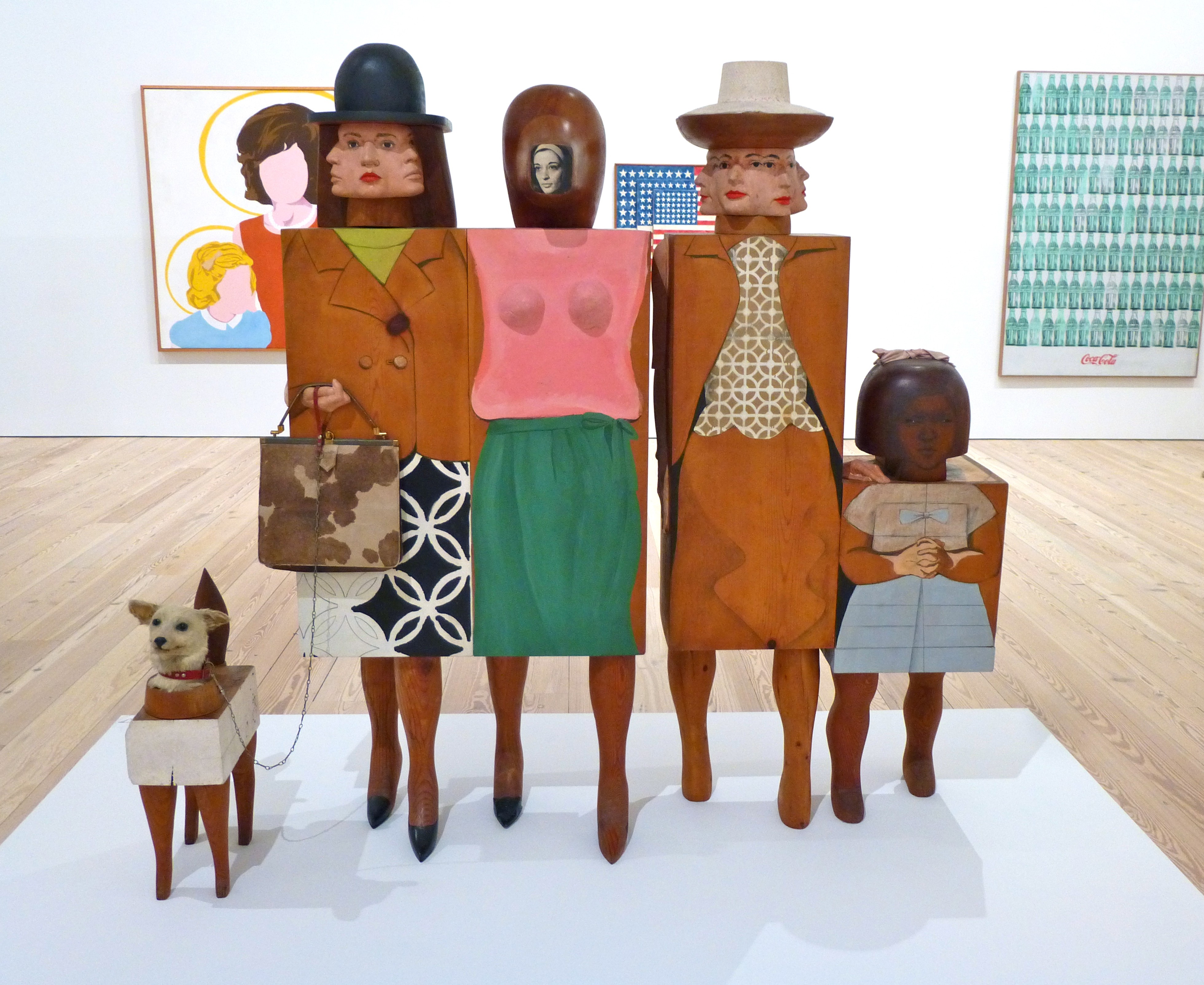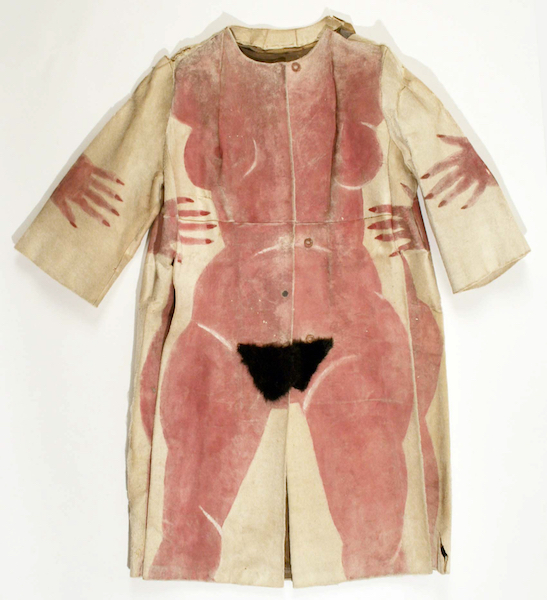Mourning Dress
by Tina Rivers Ryan

Marisol. Women and Dog. 1963–64. Wood, plaster, synthetic polymer, and taxidermied dog head. Whitney Museum of American Art, New York. © The Estate of Marisol Escobar. Licensed by VAGA, New York.
As museums and art historians rethink the inclusions and exclusions of art history, the artist Marisol, who came to fame in the Pop years and who died at the age of 85 this past spring, is the epitome of a “good object,” or curatorial find. She presents us with an opportunity to add both a woman and a Latin American (she was born in Paris to Venezuelan parents) to the top flight of postwar artists — and to do so not by expanding the scope of our history, but by rediscovering her place at its very center. After all, Marisol was no marginal figure in the postwar scene; she showed at Leo Castelli’s gallery in 1957 alongside Rauschenberg and Johns, appeared in two of Warhol’s most important films, and had her work featured at both the Venice Biennale and Documenta. In just the last year she figured prominently in “The World Goes Pop,” at Tate Modern, and “America Is Hard to See,” the inaugural show of the new Whitney Museum of American Art; a 2014 retrospective from Memphis traveled to New York’s El Museo del Barrio.
With her death prompting calls for her canonization, I’m struck by the irony that, at her most thrilling, Marisol was an artist of resolutely “bad” objects. Resisting the slick look of both high modernism and commercial art, she carved portraits of celebrities and everyday people alike from blocky forms of rough-hewn wood, which she supplemented with painted marks and the occasional readymade. Her work turned figurative when abstraction reigned supreme, asserted women’s sexuality despite social taboos, and drew upon primitive and folk forms well after art had become minimal and conceptual.
Though absent from the literature on Marisol, one of my favorite works of hers is not a sculpture at all, but a woman’s beige leather coat, now stored in the depths of the Metropolitan Museum’s Costume Institute. In 1963, she painted the top of the coat with the image of a pink standing nude, her hands raised towards her hips, wearing only red-tipped fingernails filed to a sharp point. The image cuts off at the collar, so that the wearer of the coat provides the head for the naked body. (Without a wearer, the coat is a headless mute, bringing to mind the artist’s notorious reticence in both public and private settings. Marisol’s oft-noted physical beauty, coupled with her silence, made her a screen for others’ projections — rather like this coat.) The uncanny collision of painted and real, naked and clothed, reveals Marisol’s debts to Surrealism, as does the inclusion of a triangular pelt of dark brown fur, attached unabashedly at the groin.

The work’s shock value should not disguise its formal invention. Marisol made use of the spatial relationship of the coat’s arms and flaps to create a figure seen not so much “in the round” as across multiple, fragmentary planes. In this regard, the coat is comparable to her totem-like sculptures, which the artist was inspired to make after encountering pre-Columbian art in 1953, refuting her training at both the École des Beaux-Arts in Paris and Hans Hofmann’s equally storied academy in New York. By doubling some features, just as she often did in her boxy sculptures, Marisol here plays wittily with the challenges of representing a three-dimensional body on a two- dimensional surface all wrapped around a three-dimensional, kinetic form.
Marisol had a habit of eeing the New York art world whenever she found herself perched atop it. She withstood a peripatetic childhood between Paris, Caracas, and Los Angeles; she was wracked, undoubtedly, by the demons of both celebrity and her mother’s suicide, which occurred when she was 11. After a hugely successful show at the Sidney Janis Gallery in 1966, she took another break, only to make a radical pivot in the 1970s to colorful, angst-ridden, often arcane works on paper. Many of these drawings present fragmented female forms that foreclose any easy visual pleasure: in Double Flower (1973), three sets of splayed legs are stacked on top of one another, with one vaginal opening spread wide by two hands, and the other two transformed into a toothy mouth and a circular blossom.
Perhaps understandably, Marisol remained better known for her sculptural portraits, especially of artistic luminaries. A show at Sidney Janis in 1981 featured her effigies of Georgia O’Keeffe, Willem de Kooning, Martha Graham, Louise Nevelson, Marcel Duchamp, and Pablo Picasso, among others. If we now agree to add Marisol’s name, once and for all, to this familiar list of 20th-century icons, we should follow her example by not domesticating her work into a “good object,” when it begs to rub the thick, tangled nap of art history against the grain.